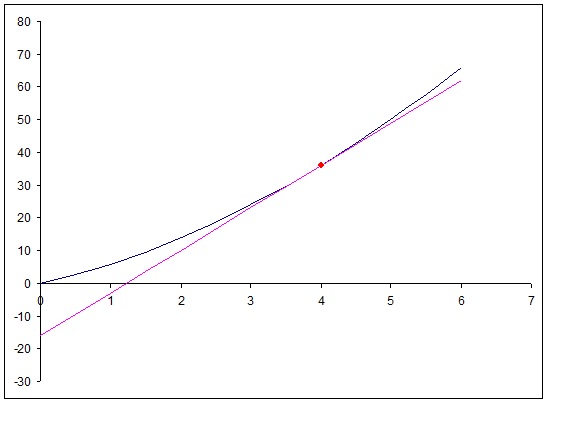How do you find the equation of the line tangent to the graph of #f(x) = x^2 + 5x# at x = 4?
2 Answers
We need a point on the line and the slope of the line.
Explanation:
At
So we know that the point
There are several good ways to present this material to students and I can't know which one you are seeing.
My guess is that you've been given one of the following as the definition and the other as an equivalent:
The slope of the tangent line to the graph of function
OR
end of definition
Given a choice, let's use the second (the algebra that way seems simpler to many students)
In this question:
# = lim_(hrarr0)(16+8h+h^2+20+5h-(16+20))/h#
# = lim_(hrarr0)(8h+h^2+5h)/h#
# = lim_(hrarr0)(13h+h^2)/h#
Now, let's take a moment to observe that if we tried to evaluate the limit by substitutiong
But now we have reached a point where we can reduce the fraction to eliminate that pesky
# = lim_(hrarr0)(cancel(h)(13+h))/cancel(h)#
For every
When
But the limit as
So, we have:
The slope of the line tangent to the graph at
And the point
Final note
Soon, you will learn more general results that will let you find the slope of the tangent line much, much more quickly. But it is important to understand this idea of the limit.
I found:
Explanation:
First we find the slope
and:
We find the coordinate
So we need the equation of a line with slope
Graphically:



